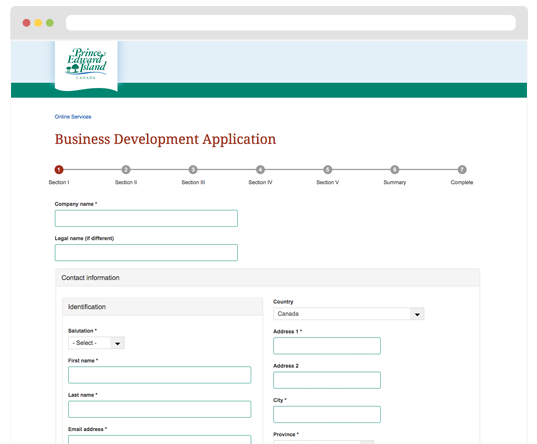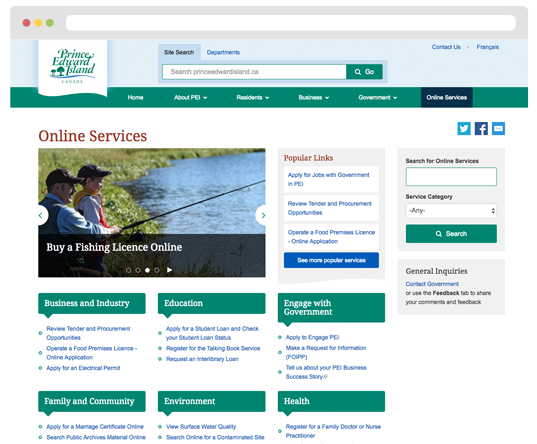Government of Prince Edward Island - eServices Portal
The province of Prince Edward Island is located on the east coast of Canada and is connected to the mainland
by the Confederation Bridge. It’s the smallest and greenest province. The Island is a place of natural
beauty where the air and water are fresh and clean.
The government of Prince Edward Island (GPEI) wished to create a modern and versatile online Webforms and
eServices portal to meet current compliance and mobility capabilities. GPEI approached OpenPlus in need of a
solution that allows them to build and deploy eServices with three main objectives.
Generic Online Forms for eServices
Quick Deployment
Integration with 3rd Party Systems
Provincial
Government
Provincial Website
Online Services
Drupal Development
Drupal Consulting
Web Design
Drupal Theming
Content Migration
Drupal Training
Project Management
Testing
WCAG Accessibility









